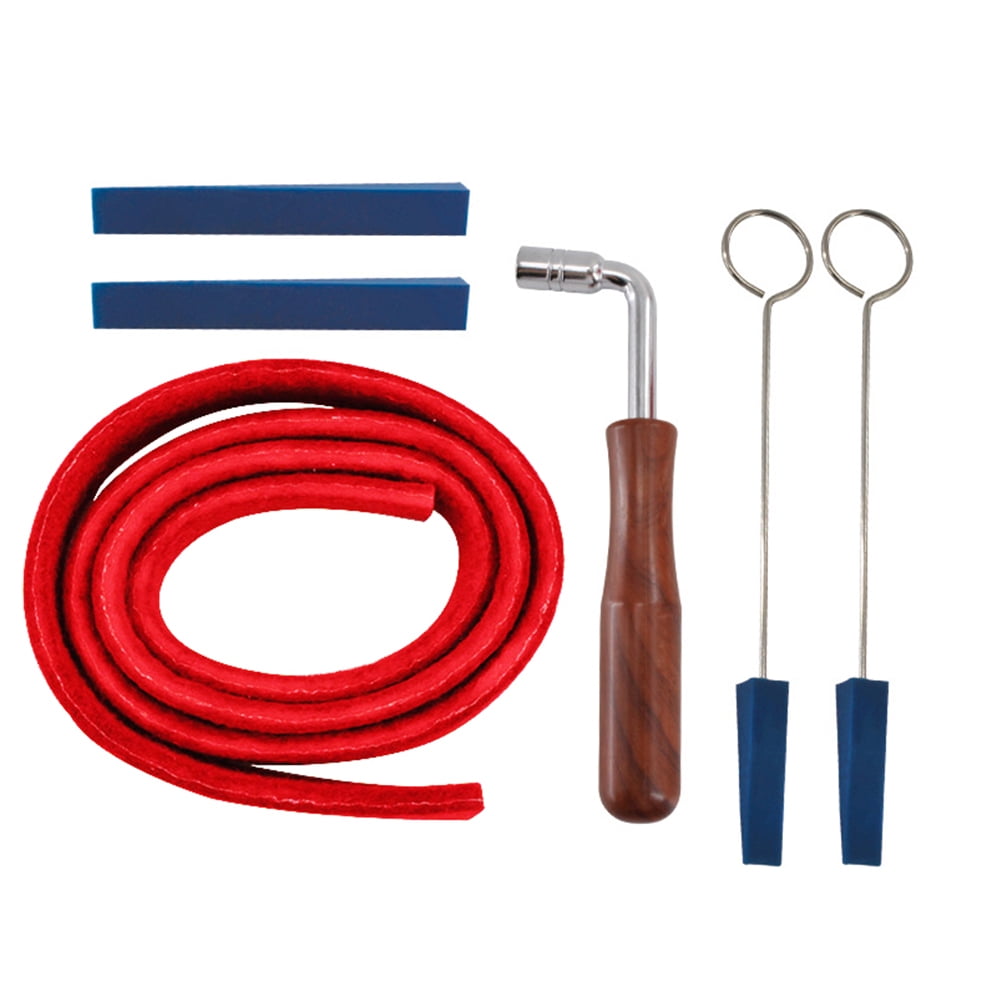
The Damper Regulator pictured above, is used to adjust the damper head so that it is seated properly on the piano string. The offset in the tool enables the technician to bypass the front row of pins when adjusting the pins under the sharp keys.

When this pin is bent sideways it causes the key to move in the same direction. Each key is guided by an oval shaped pin that protrudes into the bottom of the key. This tool, called a Key Spacer, is used to move the keys from side to side so that they are spaced evenly along the keyboard. Tools are secured and released by a slight turn of the compressing nut. This is a very handy Combination Handle that fits most of the regulating tools. Here are just a few of the most common piano repair tools.

There are over 60 different piano repair tools for regulating the action of the piano. This is a very important aspect of piano service so that the piano not only sounds in tune but also responds quickly & easily to the performer's touch. These tools are used to make fine adjustments to the action of the piano so that all the parts move at the correct time and the correct distance. But it does happen.After piano tuning tools, the most used piano repair tools in piano servicing are the Regulating Tools. You’ll find that your future preferences will be forever guided by the relationship you nurture with your tuning lever. Try to think of this tool as a ‘mate’, as something you gradually become accustomed to. Choosing a tuning hammer isn’t always about examining your strengths and preferences. Having said the above, I want to leave you with one last thought. And so, it’s my belief that there is no uniform product out there that will please everyone. I’ve spoken to hundreds of tuners in these years, and it’s astounding how much their approach to tuning varies. We were guided by our individual physique when we learned our trade. We envision how our customers will react when they see this special tool come out of our tool case. We see the ultimate use of this simple lever from different perspectives. WHY? Basically because we are all different. I’m asked, “Which one is the best? Which one is the strongest? Which one will suit my needs?” I feature a variety of lengths, head angles, handle shapes, wood choices, and weights. These levers are so diverse that they sometimes cause confusion with you. Over the last 17 years, I have developed an array of tuning hammers dedicated to the concept of lightness and balance. Please look at the first two tuning hammers on this page, and you will understand how fortunate I feel to have him on my team. So I’m happy to introduce some of Jacob’s work on this page. I think most of you will know Jacob as part of the best piano rebuilding teams in the country, Erwin’s Piano Restoration. Jacob has all the enthusiasm and all the skill to take these tuning hammers to another level. I thought I’d wait until I got old! Anyway, this ‘younger person’ is my friend and colleague, Jacob Erwin. But let me say at the outset of this paragraph, I’m not retiring! Well, not yet. They feature a coupling adapter that allow you to use Hale type tips as well as Jahn tips.Īnnouncement: At the age of 72, I’ve felt for a long time that I needed to pass this joyful business, this stroke of luck, to a younger person. Because these are hand made, they can also be customized on request to fit a particular tuner’s needs. The handles are individually hand turned and made from quality hardwoods. The combination gives the tuner an exceptionally rigidity in a smaller tube. 625″ outer tube of 3AL-2.5V titanium tubing reinforced by an inner tube of. The Faulk tuning hammer features a tuning shaft made with a.

CURRENT PRODUCTS The CF-TR Faulk Tuning Hammer


 0 kommentar(er)
0 kommentar(er)
